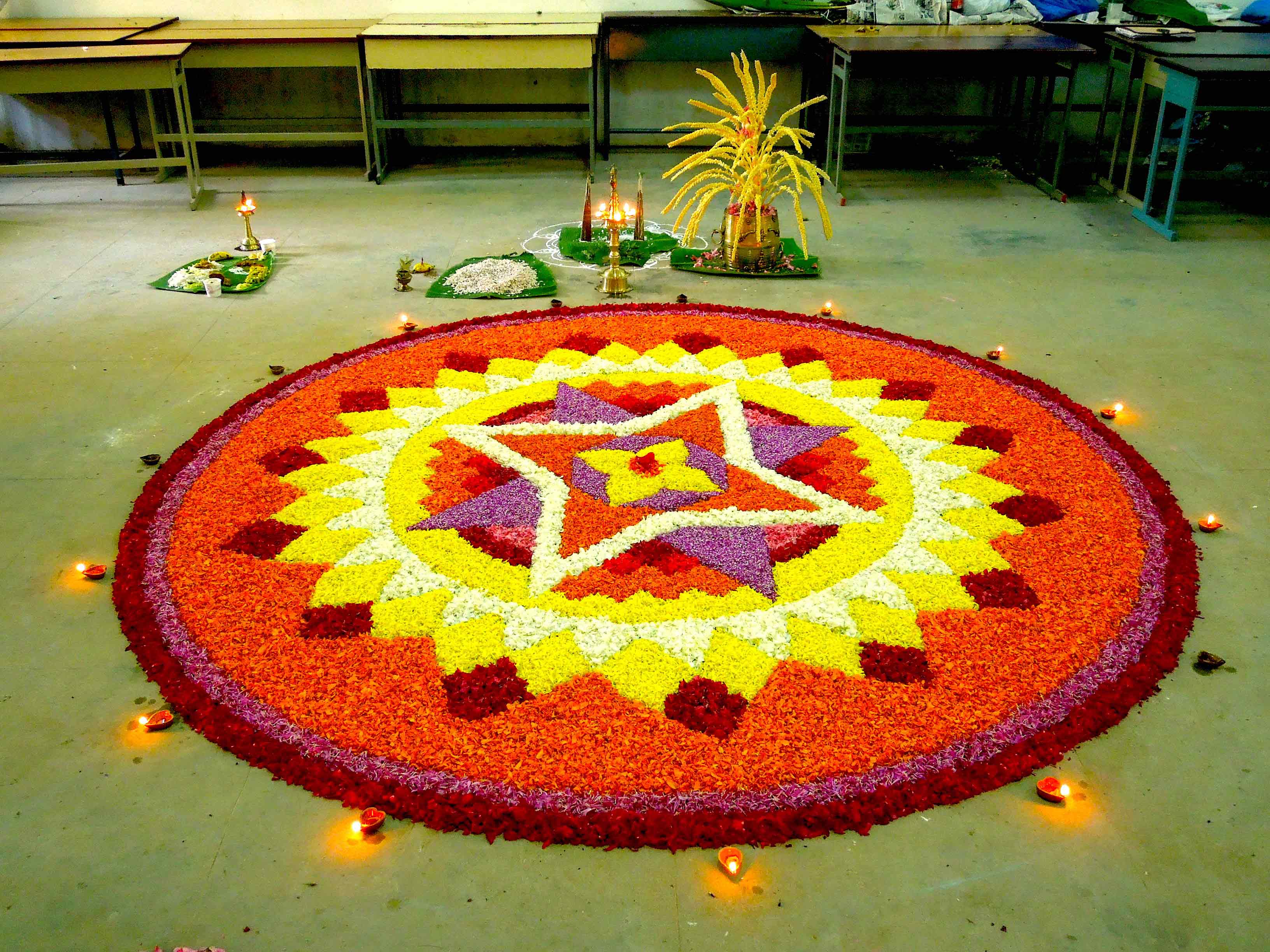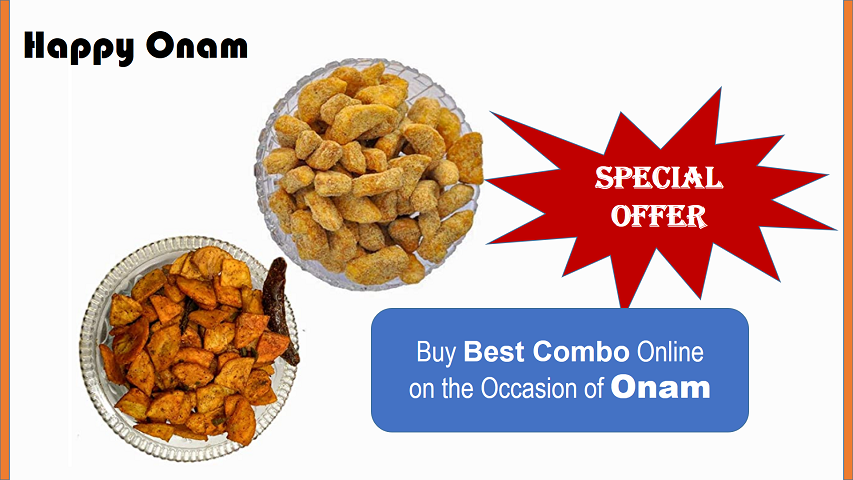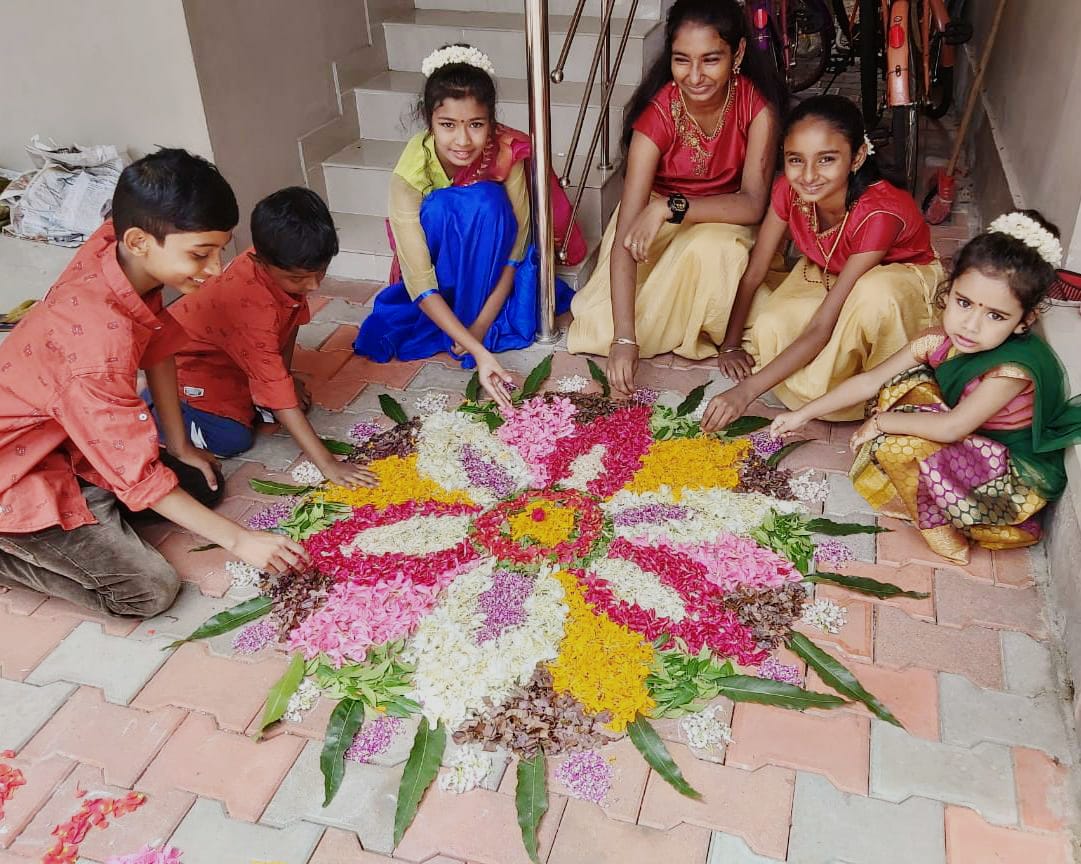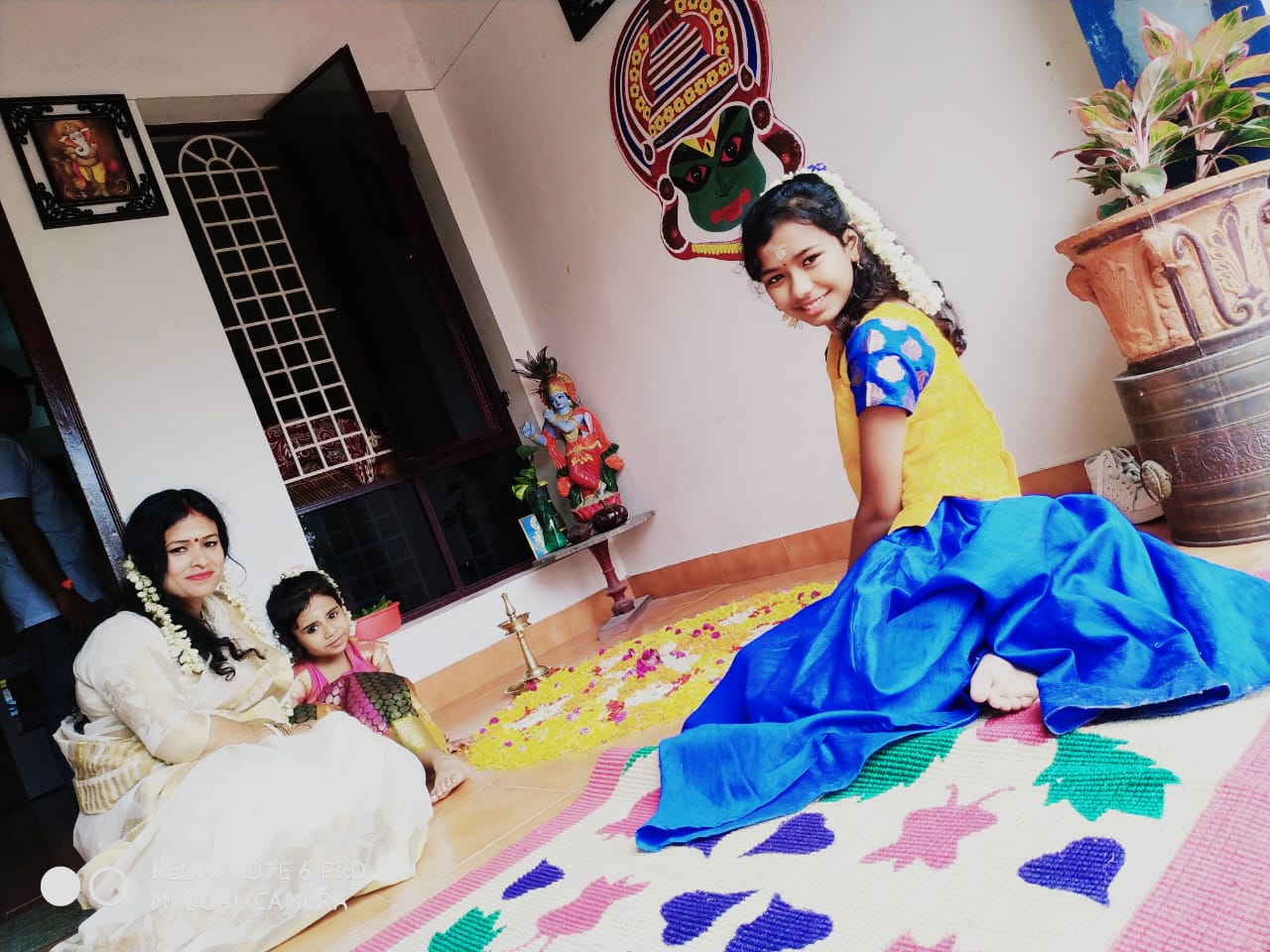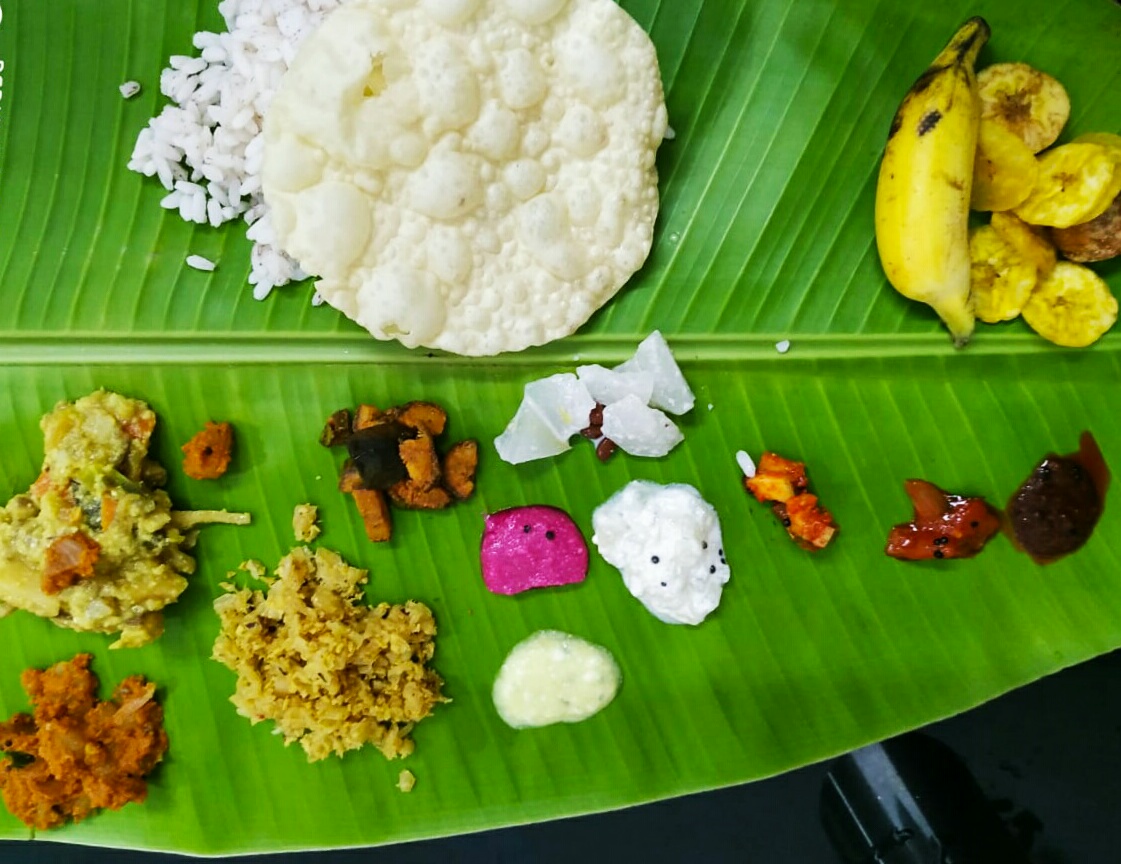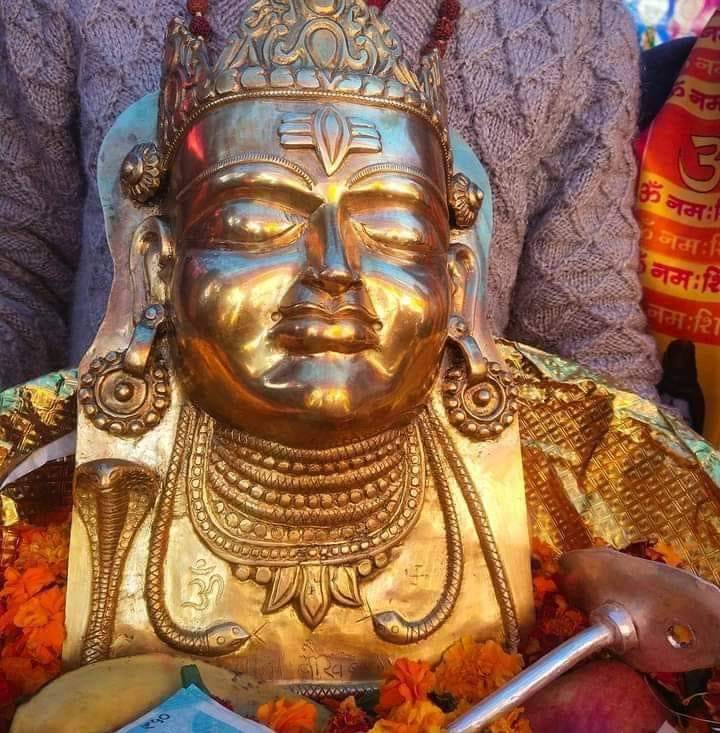Time flies! Very fast indeed! It is been an year, we relocated to Kerala; the state which is included as one of the ten paradises of the world by the National Geographic Traveler. This place leaves you stunned and mesmerized with its beautiful backwaters, lush green scenery, unique flora and fauna, majestically trailing milky waterfalls, tranquilizing beaches and rejuvenating hill stations, sky kissing coconut trees, dense forests, tea estates, rubber plantations, traditional Ayurvedic heritage, fort and palaces, colorful and lively classical dances, enriched culture, vibrant festivals etc. etc. etc.
Beauty of Kerala increases manifold during monsoon seasons. Kerala is perfect amalgamation of new and old world. The people here have embraced modernity without losing their age old customs and traditions, imbibed deep down in their lives, reflected in daily lifestyle. Onam is one of the grandest festivals of Kerala, celebrated with the same gaiety and fervor, Deepawali is celebrated using crackers in northern region of our country.
When is Onam Celebrated?
Onam Festival falls during the Malayali month of Chingam (Aug – Sep). The festival marks the homecoming of legendary King Mahabali. Onam, also the harvest festival, spans for the period of ten days, each day is dedicated to celebrations which bring out the best of Kerala culture, customs and rituals. The state seeps into festive mood during this 10-day festival that started on September 1 and will be on till September 13, 2019.
Legends associated with Onam Festival
Mainly two legends are associated with Onam celebration.
- Legend 1
Onam or Sravanmahotsavm the homecoming of King Mahabali to the state of Kerala every year. King Mahabali is also popularly called Maveli and Onathappan, was an Asura (demon) king by birth but greatly respected in his kingdom due to his righteousness and generosity. King Mahabali, the “King of Kings”, was the son of Veerochana and grandson of Prahlad, who was the son of demon King Hiranyakashyap.Similar to his father, Mahabali was an ardent worshiper of Lord Vishnu.To test the King, Lord Vishnu disguised himself as a dwarf and a poor Brahmin called Vamana (fifth incarnation of Lord Vishnu).Vamana asked for a piece of land from King Mahabali. The generous King said, he could have as much land as he wanted. Vamana said that he just wanted as much land as could cover by his three steps.The King was surprised to hear and agreed to grant the land.To this, Vamana began to expand his size and reached to the size of cosmic proportions. Vamana took first step and spanned the whole of earth and with the other step, covered the whole of the skies.He then asked King Mahabali, where the space for him to keep his third foot.The King realized that Brahmin possess majestic powers, and his third step would destroy the earth.Mahabali with folded hands, knelt down before Vamana and asked him to place his last step on his head. The Brahmin placed his foot on the head of the King, which pushed him to patala, the nether world.Lord Vishnu was pleased with the King’s sacrifice and granted a boon to him to visit Kerala once in a year. So, Onam is the day to celebrate the visit of King Mahabali to Kerala. The place where Vamana placed his foot became famous as the village of Thrikkakara. Vamanamoorthy Thrikkakara temple in the Kochi city. It becomes the center of celebration (considered as ancient capital of Mahabali and currently dedicated to Lord Vamana).
- Legend 2
Another legend or belief associated with Onam is related to Parasurama (incarnation of Lord Vishnu) who is believed to have founded the Kerala. It is believed that he saved Kerala from sea-bed by throwing his battle-axe which was traveled from Gokarnam to Kanyakumari (North to South).
10 Days Onam Celebrations: Festivity in the air!
Ten days of Onam celebrations are spectacular, devoted to spiritual upliftment. Onam has assumed a secular character and is celebrated by people of all walks of life with equal gaiety and fervour.
Beautifully decked up elephant leading processions, beautiful flower dercorations (Pookalam), breath – holding snake boat race (Vallamkali), traditionals games (Onakalikal) and dances (Kaikotti kali and Thumbi Thullal) and Onasadya – sumputous grand feast form an intergral part of Onam celebrations. And yes! Onam celebrations comes along with huge shopping discounts too!
You can buy online also the famous and authentic specialty of Onam Festival, just click here.
Of all ten days, most important ones are the first day, Atham and the last or tenth day, Thiru Onam.
-
Atham (Day 1)
People commense making of Pookkallam or the flower carpet from this day. Pookhalam’ consists of two words, ‘poov’ meaning flower and ‘kalam’ means colour sketches on the ground. In the following days, more flowers are added to Pookalam.
Athapookala
Pookalam made on the first day (Atham day) is called as Atthapookalams. Onapookalam is same as rangoli, but instead of colours, flowers in vibrant and contrasting colour are used to make designs, mainly at the enterance doors of houses which serves as a symbol to welcome King Mahabali to their homes.
Earlier it was prepared using 10-flowers (called as Dashapushpam) however nowadays varieties of colourful flowers are used.
- Chithira (Day 2)
On this day, another layer of flowers is added to the Pookkalam and cleaning of house begins. - Chodi (Day 3)
The day starts with adding a new layer of flowers to the Pookklam. From this day, families begin shopping. - Vishakam (Day 4)
The day marks the start of various competitions in the state. - Anizham (Day 5)
The much-awaited and enthralling Vallamkali Boat Race begins in most parts of Kerala on the day 5 of Onam. - Thriketa (Day 6)
Schools in Kerala start to close for Onam on Day 6. People of the start from this day devote all their time to the celebrations. - Moolam (Day 7)
Most places see the beginning of Ona Sadya and the dance performances related to the festival, Onam. The state wears a festive look with almost all corners adorned with decoration which is a treat to the eyes. - Pooradam (Day 8)
On this day of Onam, statues of Vamana and King Mahabali are( pyramid-style clayk as Onathappan)a installed in the centre of the Pookkalam. - Onam/Uthradom (Day 9)
This day is considered Onam eve. King Mahabali is believed to arrive in Kerala on this day. It’s a jubilant occasion when people rush to complete their Onam shopping and the cleaning of their homes. People buy fresh vegetables and cook traditional meals. - Second Onam/Thiruvonam (Day 10)
The main Onam celebrations occur on this day when King Mahabali is said to visit people’s homes. Homes are spic and span, finished pookalams are elaborate, new clothes are worn, and families gather to enjoy an elaborate vegetarian feast known as the Onam Sadya or Onasadya.
Third and Fourth Onam – Celebration after Onam
Though Celebrations culminates at Tenth day, Thiruvonam, two days after Onam are celebrated as Third and fourth Onam.
Third Onam/Avvittom
The third Onam, called Avittom – marks the preparations for King Mahabali’s ascension to heavens back. Onathappan statue ,placed amid pookalam is lifted and immersed into nearby waterbody. The pookalam is also removed after this ritual. The Pulikali marks the end of Onam Celebrations.
Fourth Onam/Chatayam —
Post-Onam celebrations continue for the next couple of days with snake boat races, Pulikkali tiger play, and Kerala Tourism’s Onam Week program.
What is Onam Sadya or Onasadya
Sadya means banquet in Malayalam. Onasadhya is prepared on the last day of Onam, called Thiruonam. It is a strictly vegetarian feast. Served on a banana leaf, sadya may include upto 14 finger licking and mouth watering cuisines. There is a fixed order of serving the meal and a set place to serve the various dishes on the leaf.
Special Clothing for Onam Festival: Onakkodi
Onam is synonymous to shopping. Market is flooded with huge discounts tags on every thing- clothes, jewellery, home decor and utilities and vehicles.
People wear new clothes on Thiruvonam – Onakkodi
People prefer to prepare themselves in traditional Kerala dresses: Kasavu Saree and Mundu on this day. Onam coincides with the wedding season and purchasing gold is inevitable. You can buy traditional dresses online from amazon website or any other online website if not able to go to nearby shops.
Famous traditional Dances during Onam Celebrations
Some of the best known Kerala dances are performed on the occasion of Onam. Most remarkable of them all are Kathakali, Kaikottikali and Thumbi Thullal.
- Thumbi Thulal
A dancing performance by women, beautifully donned in traditional Kerala sari (Kasavu Sari) and glittering with intricate jewelery. Dance includes a main performers who is center staged, encircled by other women performers. - Kaikottikali
Kaikottikali or Thiruvathira is a most popular dance form of Onam celebrations. This dance is performed by women, 8-10 in number, around a traditional brass lamp. They clap in unison and move in a circle, synchronous to tune of the devotional songs. Dances are dedicated to Lord Krishna, Lord Ganesha, Goddess Saraswati and King Mahabali. - Pulikkali
Pulikkali means “Tiger play”. Pulikkali is an ancient (around 200 years ago) traditional dance style in which performers are painted to resemble a tiger. They dance on the beat of traditional instrumental beats. Raja Ravi Verma introduced Pulikkali, and left this legacy for Kerala.The folk art is mainly practiced in Thrissur district of Kerala. Best place to watch the show is at Thrissur on the fourth day of Onam, where Pulikkali troupes from all over the district assemble to display their skills. - Kummatti Kali
It is an art form which closely captures the spirit and mood of Onam. The performers wear heavy face mask made up of wood, staging Krishna, Narada, Darika or hunters, draped in grass and dance to the tunes of traditional Onavillu.
Traditional games associated with Onam celebrations
There is a set of traditional games to be played on Onam which are collectively called, Onakalikal.
- Vallam Kali
It is traditional snake boat race which is organised in the backwaters of Kerala. Oared by more than a hundred oarsmen in a rhythm provided by beats of drums and cymbals, boat race has huge attraction for tourists. The world renowned Nehru trophy boat race is oragnised im Punnamada Lake in Alappuzzha. - Talappanthukali
This game is played with a ball by two teams with equivalent number of team members. A ball is thrown and it is supposed to hit a stick placed at the one end of court or ground, thus gaining a point. The opposing team tries to catch the ball. - Ambeyyal- Game of archery
It is an interesting event where bamboo bows and blunted arrows are used. People divide themselves into two teams and try to deprive each other of their stock of arrows.Onavillu is a simple, short, bow shaped musical instrument. It is a ceramonial bow and offered to the dieties at Sri Padmanabhaswamy Temple on Thiruvaonam day in Onavillu charthal, the dedication ceremony of the colourful bows. This is an age old tradition that has sustained till now from 16th century. - Combat games
‘Kayyankali’ and ‘Attakamal’ two combat games, performed by man on Onam day. Kayyankali is played singly while Attakamal is played in batches and is relatively less dangerous. - Vadam Vali
“Tug of war” and Kutukutu, variation of Kabaddi locally.The state has faced havoc of worst ever deluge, for two years in a row. Amid this, Onam symbolises unwavering faith of Keralites in King Mahabali, they leave no stone unturned to welcome and please King Mahabali, bounding him to visit Kerala year after year, after every year.
Thiruonam Aashamsakal
“To everyone, Onam Wishes”
